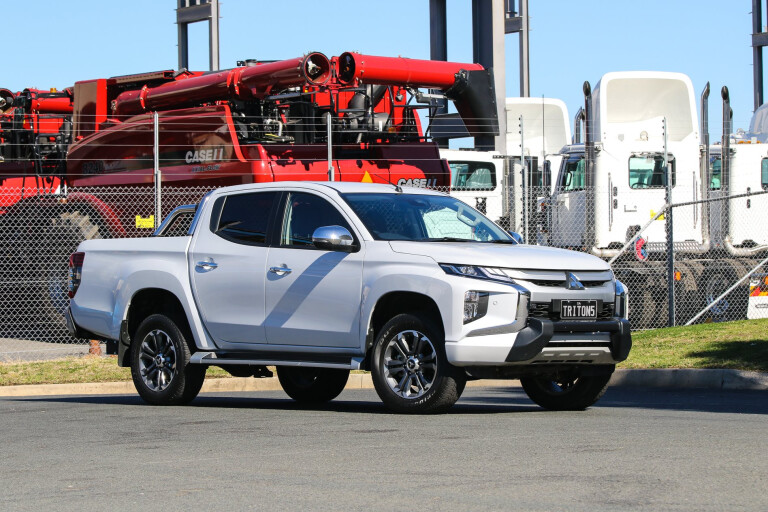
Sometimes I wonder if Mitsubishi sells cars by the metric tonne, rather than individually… despite having one of the oldest model line-ups in the automotive world, its cars constantly top sales charts thanks to a combination of dependability, familiarity and value that Aussie car buyers can connect with.
So it is with the Mitsubishi Triton ute, a stalwart of the local landscape that happily bats at number three in the order, claiming wickets by dint of a sharp eye on its pricing.
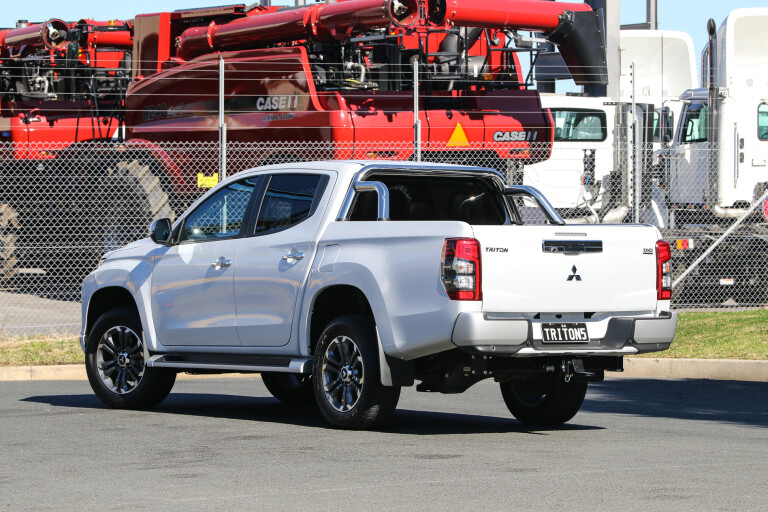
It’s a little smaller and a little less powerful, but the Triton knows its strengths and plays to them.
The 2019 update, then, comes as a bit of a surprise. Gone is the softer, gently curved, almost feminine demeanour of the previous model, replaced instead by a bold, sharp and entirely modern fascia that’s almost concept-car in its look.
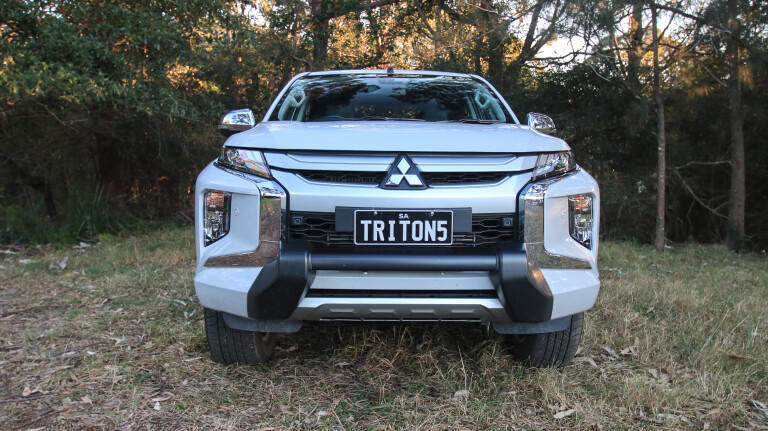
It’ll polarise opinions, sure, but to my eyes, it looks amazing and because it’s so bold and confident, it’ll stay on trend for a long time.
Underneath that striking nose job, though, little else has really changed – and that’s a good thing.
Value
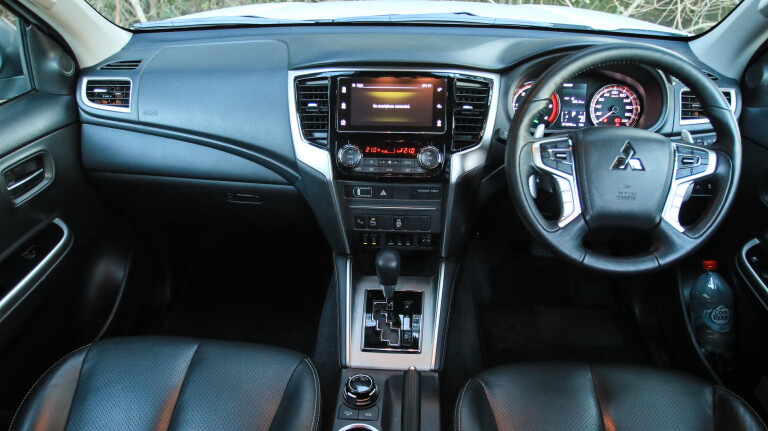
We’re trialling the Triton GLS Premium, which takes pride of place at the top of the line-up. It officially costs $51,900 before on-roads, but Mitsubishi has it for $50,990 drive-away at present.
For that, the GLS Premium comes standard with Mitsubishi’s excellent direct-injection 2.4-litre turbocharged diesel four-cylinder engine that’s now backed by a six-speed automatic transmission that drives all four wheels.
Compare the Toyota HiLux to the Triton, and the $50,740 SR5 is the most logical competitor. The HiLux has less driver aid safety tech and a little more power and torque, while the Ford Ranger XLT in five-cylinder form is a $50,640 proposition.
Fuel economy-wise, the Triton is claimed to use 8.6 litres per 100km on the combined cycle. After 390km of driving, we returned 9.2L/100km. A 75-litre tank gives the Triton a theoretical range of around 870km.
Servicing costs are pretty keen, too, with each of the first three services capped at $299 per service, while Mitsubishi provides- until the middle of next year, at least – a seven-year/150,000km warranty.
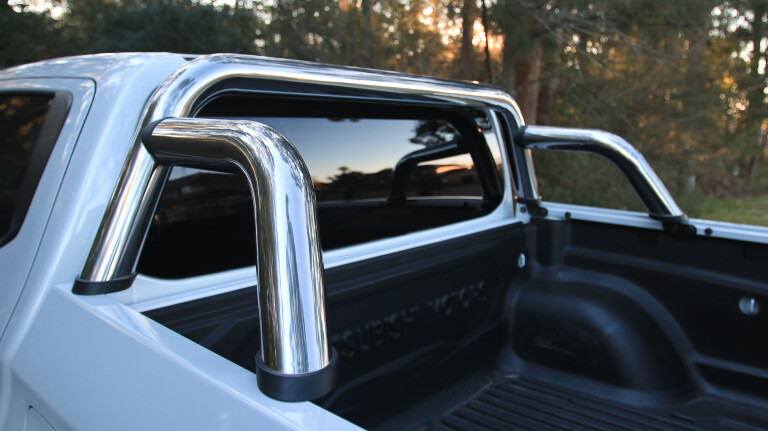
Standard equipment
The GLS Premium is pretty loaded – keyless entry with pushbutton start, dual-zone climate control, LED headlights and taillights, heated leather front seats (power adjustment for the driver), auto lights and wipers, a 7.0-inch colour touch multimedia system with Apple CarPlay and Android Auto, digital radio and three USB ports are all standard.
There are 18-inch rims, a nudge bar, a decorative sports bar and a plastic tray liner as well.
Mechanically, a proper low-range transfer case, hill descent control and a locking rear diff complement the Super Select II all-wheel-drive system, but the Triton still retains its drum brake-equipped and leaf-sprung rear end.
Spend four grand less on the GLS, and you’ll lose the leather, the rear diff lock, 360-degree camera and the keyless entry system.
Some people might miss built-in sat-nav, but I reckon preloaded maps on a dedicated app will do just as good a job. I reckon, though, that a towbar wouldn’t have gone astray as standard spec, and a digital speedometer would be a good inclusion as well.
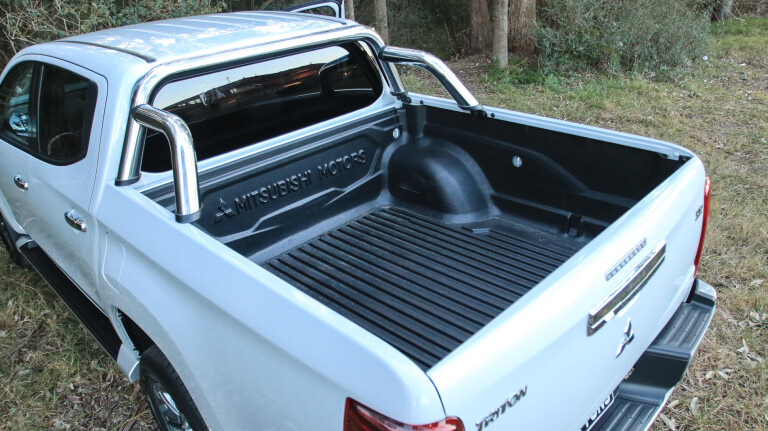
Size
The 5409mm long Triton is slightly narrower than most of its competition at 1815mm wide, but that doesn’t hurt it internally when compared to its main rivals.
The tray is a handful of millimetres narrower, too, but it still measures out to be long (1520mm) and deep (475mm). It measures 1085mm wide between the wheel arches and 1470mm wide at its widest point.
It offers 220mm of ground clearance, 27.5-degree approach and a fairly shallow 23-degree departure angle, due to the length of its rear overhang.
Room in the rear seats is decent enough, with good knee and toe room, while head room is suitable for taller passengers. The inclination of the rear seats is decent, too, which improves comfort.

The Mitsubishi Triton can tow 3100kg of braked trailer, which is 400kg less than many of its rivals. Mitsubishi points out, though, that it has more payload capacity as a result.
Safety
Mitsubishi has pushed the boat out here, giving the Triton almost every modern driver safety aid available today.
Its seven-airbag stash includes full-length curtain bags, while lane departure and blind-spot warning, rear cross-traffic alert, trailer sway control and an unmitigated acceleration prevention system (which stops drivers from accidentally accelerating through walls and the like in slow-speed situations) are all standard.
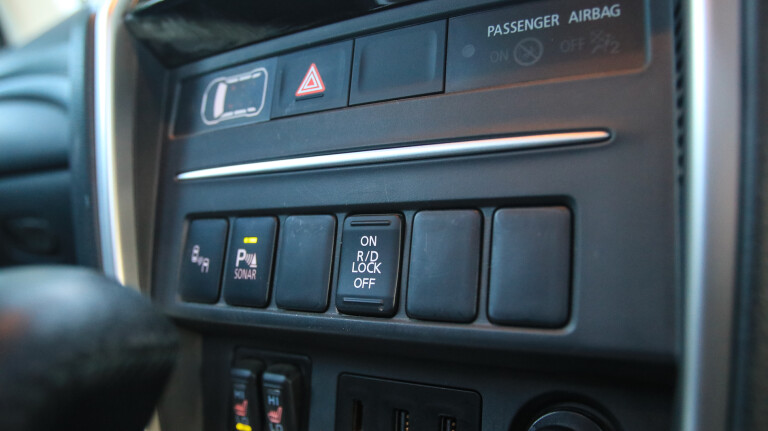
Its ANCAP five-star maximum score dates back to the launch of the current MQ model, but it would still do well thanks to its safety kit.
Comfort
The Triton’s steering wheel is adjustable for both rake and reach, and the front seats are decently sized and comfortably shaped.
There are rear vents, but they are rather awkwardly bunged into the roof liner (better to have them than not, though). ISOFIX baby seat mounts, a pull-down armrest and a rear USB port are nice additions to the cabin, too.
Big tick for storage, too; the front door pockets comfortably swallow larger water bottles, and there’s plenty of room for bits and pieces throughout the cabin.
On the road
If you’re buying a dual-cab ute because you think they will drive nicely on the road, you’re going to be disappointed. Like its competitors, the Triton is tall, narrow and relatively stiffly sprung, which means its road manners are always going to be compromised.
The Triton’s rear end is suspended by leaf springs, which are tuned to deal with its 2900kg gross vehicle mass. This means that the 2045kg GLS Premium has the ability to carry 855kg of people and payload, and so the suspension has to be built to deal with that load, whether it’s on board or not.
Interestingly, the new GLS Premium is 54kg than the next model down, the GLS, and a full 87kg heavier than its 2018 model year equivalent.
With just a driver on board, the Triton feels firm and fidgety around town, though it stops on the right side of being nervous and skittish. Chuck a couple of cement bags in, and it calms down nicely… but more weight means higher fuel consumption.
Steering feel is a bit woolly but generally in keeping with the category, and its brake feel, too, isn’t the last word in modulated refinement, but it’s an easy drive around town and out on the highways and byways.
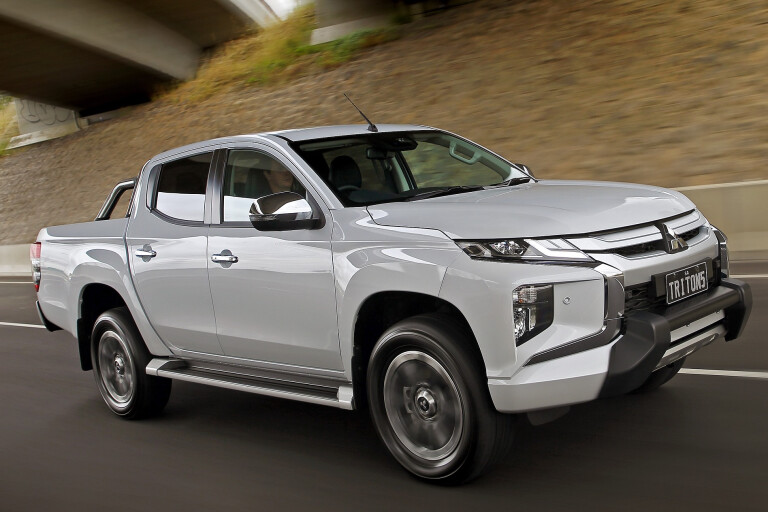
That fidgety nature also reveals itself off-road, though Mitsubishi’s excellent all-wheel-drive system does a brilliant job of finding traction where there is none.
Multiple off-road modes are easily accessed, but its automatic mode, combined with the hill descent mode and locking rear diff, gives the Triton genuine dirt and sand abilities that belie its price point.
It’s one of the few dual-cab that offers full-time high-range four-wheel-drive ability, as well, which is a boon on wet, snowy or gravelly roads.
The Bridgestone Dueler tyres are a good spec here too, though 17-inch rims would give you a wider choice of more specific offroad rubber.
The all-alloy MIVEC-equipped 2.4-litre direct-injection four-cylinder was, in Mitsubishi’s words, the best diesel engine it could make when it debuted in 2015. Its outputs of 133kW and 430Nm are a little shy of the HiLux and Ranger’s best, but it still puts on a fair show.

Now combined with a six-speed auto – the only choice for the GLS Premium – the small engine does its best work at highway pace. Off-throttle, it all but disappears into the background, and its diesel rattle is well contained when the throttle is picked up again.
It can be caught napping off boost, though, displaying a chunk of turbo lag under 2000rpm. With peak torque reached at 2500rpm and peak power not long after that, it’s a fair-sized hole that needs careful management to fill.
Overriding the six-speed with the paddle shifters behind the wheel is one way to manage it, but it’s definitely not as linear as Ford’s five-cylinder diesel, for example.
Overall, though, the Triton manages its dual jobs of road-going passenger car and off-road utility vehicle pretty well.
Verdict

Mitsubishi has carved out a clever and successful niche in the dual cab space by offering fair value for money at the expense of a smidge of size and by extending the life of key components like platforms and powertrains.
With the latest Triton, it’s pushed the boat out – successfully in my eyes – with a bold new design that will stand it in good stead in the years to come.
Is the GLS Premium necessarily the best value Triton out there? Maybe not, but when you look at the price of its rival’s flagship models, the GLS Premium stacks up well.
COMMENTS